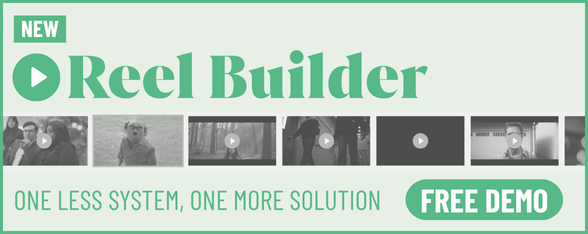
The Importance of Using AI Ethically, Thoughtfully and Creatively

Tim Schatz has more than ten years of analytics experience in several industry verticals. His expertise ranges from data management to the optimisation of multimillion-dollar marketing campaigns across all channels.
His skillset includes data visualisation, dashboard design, measurement planning, and uncovering insights for various advertising operations.
He holds an MBA in finance and specialises in making often complex analyses approachable for all stakeholders, with his easy-going approach to data analytics.
LBB> What’s the most impactful way that AI is helping you in your current role?
Tim> At H/L, the most immediate and impactful applications of AI have been in both writing code – Python, SQL, and other languages that power our data workflows – and conducting research. AI has significantly transformed our research capabilities, enabling us to quickly gather, synthesise, and apply intelligence across campaigns. These functions together have delivered clear, measurable time savings and helped accelerate the pace of work across departments.
LBB> We hear a lot about AI driving efficiencies and saving time. But are there any ways that you see the technology making qualitative improvements to your work, too?
Tim> Yes – AI is enhancing the quality of our strategic and creative thinking. It allows us to bring deeper insights and more audience-specific nuance into every campaign, including those with smaller scopes or tighter timelines.
By combining first-party data, client business inputs, and broader market research, AI helps us elevate the strategic rigor of every brief, which ultimately leads to more resonant creative work.
LBB> What are the biggest challenges in collaborating with AI as a creative professional, and how have you overcome them?
Tim> One major challenge is integrating AI into creative workflows in a way that feels natural and productive. While tools promise production-ready visuals or videos, we frequently run into limitations in controllability and precision – we often can't quite get the output we envision.
Additionally, the pace of change in the AI space makes it hard to standardise processes. We’re navigating this through ongoing experimentation and building internal knowledge around the best use cases for different tools.
LBB> How do you balance the use of AI with your own creative instincts and intuition? And how do you ensure that the work produced with AI maintains a sense of authenticity or human touch?
Tim> We treat AI as a co-pilot, not a creator. It plays a valuable role in ideation, scripting, and storyboarding, but it doesn’t replace the human creative spark. Authenticity comes from people – the emotional nuance, cultural relevance, and storytelling instincts that AI still can’t replicate. We see the best results when AI helps amplify human ingenuity rather than trying to mimic or replace it.
LBB> Do you think there are any misconceptions or misunderstandings in the way we currently talk about AI in the industry?
Tim> Definitely. There's a tendency to view AI as either a magical solution or a creative threat. In reality, it's a tool – one that requires oversight, thoughtful integration, and constant refinement. It can enhance processes, but it doesn't eliminate the need for human judgment, creativity, or ethical boundaries.
LBB> What ethical considerations come to mind when using AI to generate or assist with creative content?
Tim> One key concern is protecting the creative process and respecting original artistry. One example is the recent explosion of Studio Ghibli-style art being created using OpenAI's updated image generation tool. It is technically impressive – but ethically problematic. It imitates the distinct creative style of Hayao Miyazaki, reducing his extremely detailed creative process to AI-generated outputs, without respecting the intention and craft behind it.
That’s the tension we have to manage as an agency: how do we embrace new tools without eroding the very thing that makes creative work meaningful? We believe in finding a balance – using AI to speed up and scale where it makes sense, but never letting it replace the spark that comes from human ingenuity.
LBB> Have you seen attitudes towards AI change in recent times? If so, how?
Tim> Yes, there’s been a noticeable shift. Early on, many people were sceptical or overwhelmed. Now, there's more curiosity, and a willingness to explore. Still, there's healthy caution. Teams and clients alike are asking better questions about how AI is used, what its outputs mean, and what its long-term implications might be.
LBB> Broadly speaking, does the industry’s current conversation around AI leave you feeling generally positive, or generally concerned, about creativity’s future?
Tim> I’m generally optimistic. AI is going to unlock new formats, help democratise access to high-quality tools, and enable entirely new ways of telling stories. But I think our optimism needs to be paired with intention. The more we focus on how we use AI – ethically, thoughtfully, creatively – the better the future looks.
LBB> Do you think AI has the potential to create entirely new forms of art or media that weren’t possible before? If so, how?
Tim> Absolutely. AI can combine data, visuals, and interactivity in ways that weren’t previously feasible. From immersive, real-time audience experiences to data-driven narratives that evolve in real time, the potential is enormous. We're just starting to see the surface of what might be possible.
LBB> Thinking about your own role/discipline, what kind of impact do you think AI will have in the medium-term future? To what extent will it change the way people in your role work?
Tim> In roles like mine, AI is already reshaping how we work. It automates technical tasks, accelerates insight generation, and enhances collaboration across teams. I expect we’ll see more hybrid skill sets emerge – where analytical, creative, and technical fluency blend more seamlessly. But the heart of our work – strategic thinking, intuition, creative thinking, ethical decision-making – will still rely on human expertise. That’s where the real value will continue to live.















